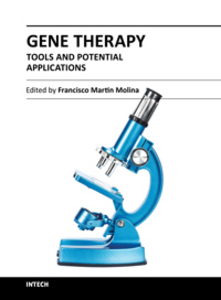Feasibility of gene therapy for tooth regeneration by stimulation of a third dentition
Takahashi, Katsu, Kiso, Honoka, Saito, Kazuyuki, Togo, Yumiko, Tsukamoto, Hiroko, Huang, Boyen, and Besho, Kazuhisa (2013) Feasibility of gene therapy for tooth regeneration by stimulation of a third dentition. In: Martin, Francisco, (ed.) Gene therapy: tools and potential applications. InTech, Rijeka, Croatia, pp. 727-744.
![[img]](https://researchonline.jcu.edu.au/23466/4.hassmallThumbnailVersion/23466-takahashi-et-al-2013-cover.jpg)
|
Image (JPEG) (Book Cover)
- Cover Image
Download (43kB) |
|
|
PDF (Accepted Version)
- Accepted Version
Download (1MB) |
||
|
PDF (Published Version)
- Published Version
Available under License Creative Commons Attribution. Download (1MB) |
Abstract
[Extract] The tooth is a complex biological organ that consists of multiple tissues, including enamel, dentin, cementum, and pulp. Missing teeth is a common and frequently occurring problem in aging populations. To treat these defects, the current approach involves fixed or removable prostheses, autotransplantation, and dental implants. The exploration of new strategies for tooth replacement has become a hot topic. Using the foundations of experimental embryology, developmental and molecular biology, and the principles of biomimetics, tooth regeneration is becoming a realistic possibility. Several different methods have been proposed to achieve biological tooth replacement[1-8]. These include scaffold-based tooth regeneration, cell pellet engineering, chimeric tooth engineering, stimulation of the formation of a third dentition, and gene-manipulated tooth regeneration. The idea that a third dentition might be locally induced to replace missing teeth is an attractive concept[5,8,9]. This approach is generally presented in terms of adding molecules to induce de novo tooth initiation in the mouth. It might be combined with gene-manipulated tooth regeneration; that is, endogenous dental cells in situ can be activated or repressed by a gene-delivery technique to produce a tooth. Tooth development is the result of reciprocal and reiterative signaling between oral ectoderm-derived dental epithelium and cranial neural crest cell-derived dental mesenchyme under genetic control [10-12]. More than 200 genes are known to be expressed during tooth development (http://bite-it.helsinki.fi/). A number of mouse mutants are now starting to provide some insights into the mechanisms of supernumerary tooth formation. Multiple supernumerary teeth may have genetic components in their etiology and partially represent the third dentition in humans. Such candidate molecules or genes might be those that are involved in embryonic tooth induction, in successional tooth formation, or in the control of the number of teeth. This means that it may be possible to induce de novo tooth formation by the in situ repression or activation of a single candidate gene. In this review, we present an overview of the collective knowledge of tooth regeneration, especially regarding the control of the number of teeth for gene therapy by the stimulation of a third dentition.
| Item ID: | 23466 |
|---|---|
| Item Type: | Book Chapter (Research - B1) |
| ISBN: | 978-953-51-1014-9 |
| Additional Information: | This is an open access article distributed under the terms and conditions of the Creative Commons Attribution License (http://creativecommons.org/licenses/by/3.0/) |
| Date Deposited: | 13 Mar 2013 01:25 |
| FoR Codes: | 11 MEDICAL AND HEALTH SCIENCES > 1105 Dentistry > 110507 Paedodontics @ 10% 06 BIOLOGICAL SCIENCES > 0604 Genetics > 060403 Developmental Genetics (incl Sex Determination) @ 50% 11 MEDICAL AND HEALTH SCIENCES > 1103 Clinical Sciences > 110311 Medical Genetics (excl Cancer Genetics) @ 40% |
| SEO Codes: | 92 HEALTH > 9201 Clinical Health (Organs, Diseases and Abnormal Conditions) > 920113 Oro-Dental Disorders @ 70% 92 HEALTH > 9201 Clinical Health (Organs, Diseases and Abnormal Conditions) > 920110 Inherited Diseases (incl. Gene Therapy) @ 30% |
| Downloads: |
Total: 3284 Last 12 Months: 27 |
| More Statistics |



